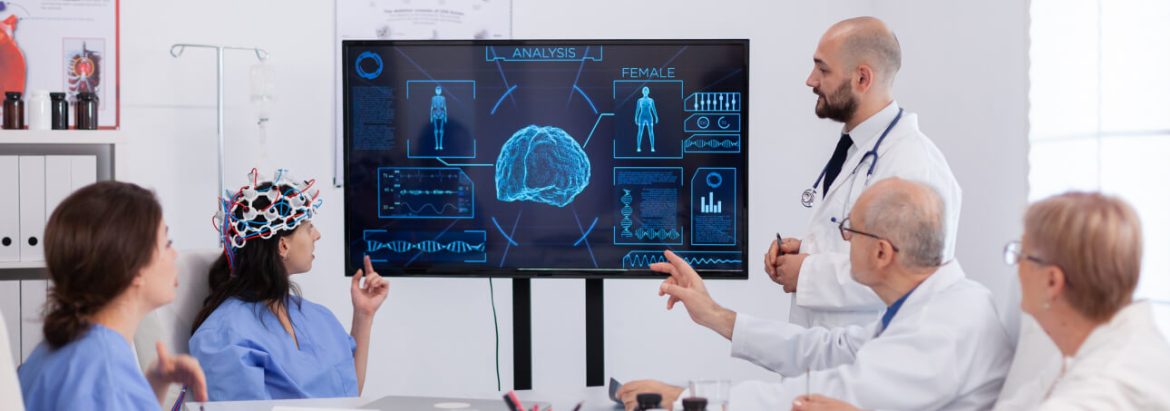
Revolutionizing Data Management in Healthcare with ZIFTM


In today’s fast-paced world, healthcare organizations, including providers and payers, grapple with an unprecedented volume of IT data. Efficiently managing this data is not just crucial for providing quality healthcare services, but it’s also vital for ensuring compliance with stringent data security and privacy regulations. Enter ZIFTM, a cutting-edge AIOps (Artificial Intelligence for IT Operations) platform poised to redefine how healthcare organizations manage their IT data. In this article, we’ll delve into the significance of ZIFTM as a data lake for IT data in healthcare, explore how it transforms data management, and provide insights into best practices for implementation.
IT data lakes are robust repositories designed to store vast amounts of structured and unstructured IT data at scale. Within the healthcare sector, these data lakes act as central hubs for storing an extensive range of information related to IT infrastructure, operations, and performance. Unlike traditional databases, IT data lakes excel in handling large volumes of data, making them an ideal fit for healthcare’s data-intensive environment.
Data Consolidation: These repositories enable healthcare organizations to consolidate IT data from various sources, providing a unified view of their IT infrastructure. This holistic perspective proves invaluable for IT professionals in efficiently managing and optimizing IT operations.
Scalability: In the ever-evolving digital landscape, IT data continuously grows. IT data lakes are purpose-built to scale effortlessly, accommodating the ever-increasing volume of IT data generated by healthcare systems.
Data Variety: IT data lakes possess the remarkable ability to store structured data (e.g., server logs, network traffic) and unstructured data (e.g., application logs, error messages) in their raw form. This versatility makes them exceptionally suitable for handling diverse IT data types.
Advanced Analytics: Beyond storage, IT data lakes provide the foundational infrastructure for advanced analytics, including machine learning and predictive modelling. These capabilities translate into improved IT performance, reduced downtime, high service availability, and heightened security.
In the dynamically evolving realm of healthcare, two pivotal innovations are reshaping the industry: Medical Interoperability and machine learning (ML). Medical Interoperability revolves around the seamless sharing of healthcare information across diverse systems and platforms. To harness the immense potential of these advancements, GAVS unveiled one of the industry’s Best AIOps tools based on big data for healthcare services, known as Zero Incident Framework (ZIFTM). This ground-breaking service empowers healthcare providers, payers, and life sciences companies to securely store, transact, analyse, and exchange health data at an unprecedented scale.
At the heart of ZIFTM Data Lake’s capabilities lies its robust support for Fast Healthcare Interoperability Resources (FHIR). FHIR, a universally standardized format for healthcare data exchange, has gained widespread acceptance within the industry. It streamlines the exchange of structured medical data, making it readily accessible to clinical researchers, informaticians, and machine learning tools. FHIR introduces a designated resource for capturing documents, such as physician’s notes or summaries of lab reports. However, to fully unleash the potential of this data, it must undergo extraction and transformation into a more user-friendly format.
As FHIR-formatted medical data finds its way into ZIFTM Data Lake, a transformational process ensues. ZIFTM, recognized as one of the industry’s Best AIOps tools employs advanced natural language processing (NLP) techniques, meticulously trained to comprehend medical terminology. These techniques enrich unstructured data with standardized labels, a crucial step that involves identifying medications, conditions, diagnoses, procedures, and more. Through standardization and tagging, ZIFTM ensures that all data becomes normalized and effortlessly searchable.
Handling EHR data efficiently is a critical task in healthcare, and Fast Healthcare Interoperability Resources (FHIR) standards play a crucial role in this process.
Here’s an explanation of how EHR data is processed by ZIFTM and the role FHIR plays in it:

Effectively implementing ZIFTM within a healthcare IT environment necessitates meticulous planning and execution. Here are some best practices to consider:
Data Governance: Establish robust data governance practices to guarantee data quality, integrity, and security for IT data. Define data ownership, delineate data stewardship roles, and establish policies for data lifecycle management.
Data Strategy: Formulate a clear IT data strategy that impeccably aligns with organizational goals. Identify key data sources, prioritize data integration efforts, and outline data retention policies.
Data Pipelines: Design streamlined data pipelines that automate IT data ingestion, transformation, and loading processes. Consider the adoption of real-time data streaming for critical IT data.
IT Security: Make judicious use of ZIF’s comprehensive security features to fortify IT data against unauthorized access and potential cyber threats. Regularly audit and monitor IT data access to ensure both compliance and security objectives are met.
In the healthcare sector, efficient IT data management transcends best practices; it stands as a strategic imperative. The utilization of an AIOps platform like ZIFTM to supercharge IT Data Lakes charts a course toward more effective IT operations, reduced downtime, heightened security, and unwavering compliance with data regulations.
As healthcare organizations increasingly rely on digital technologies to deliver critical healthcare services, the adoption of advanced IT data management solutions like ZIFTM becomes not just beneficial but imperative. The embrace of these technologies positions healthcare IT infrastructure for the future, enabling the uninterrupted delivery of patient care.
Please complete the form details and a customer success representative will reach out to you shortly to schedule the demo. Thanks for your interest in ZIF!